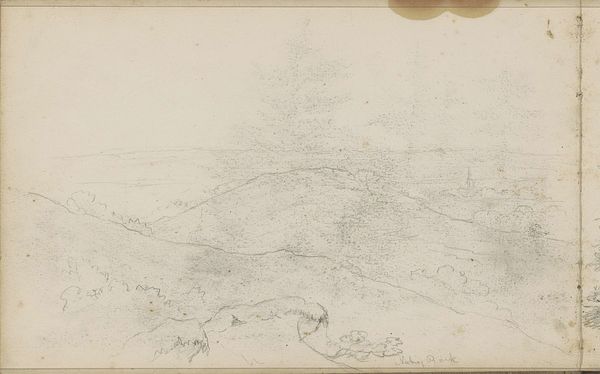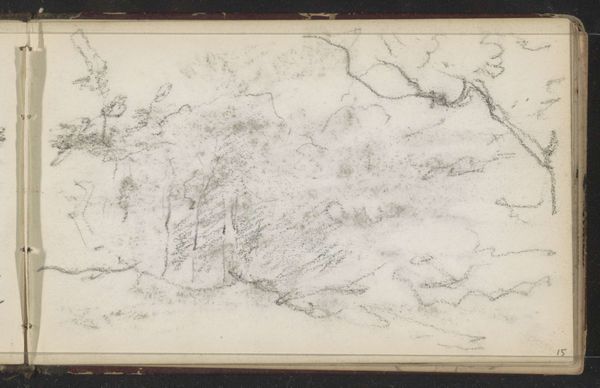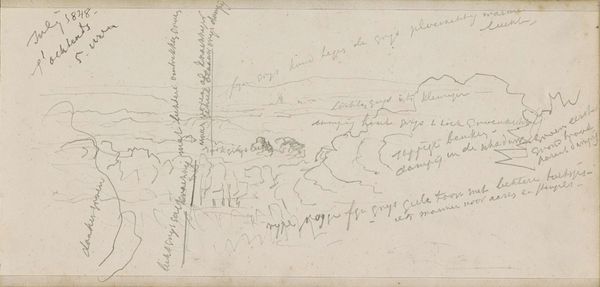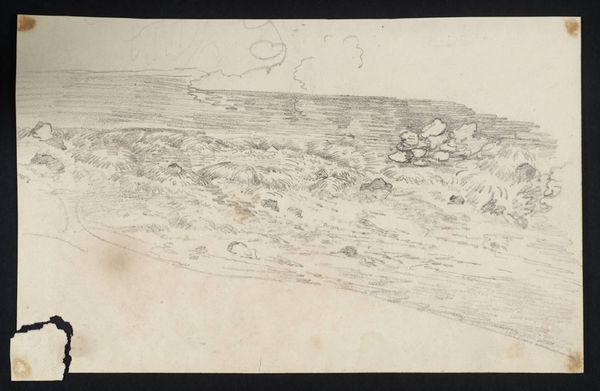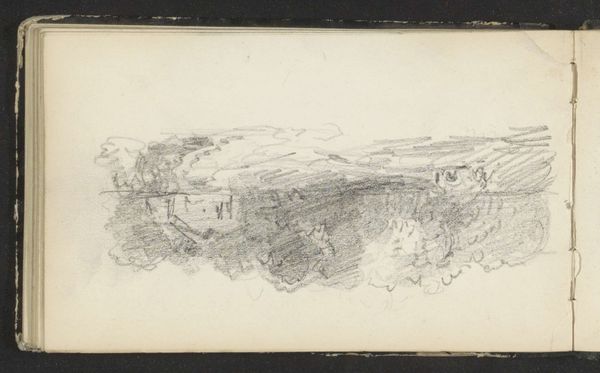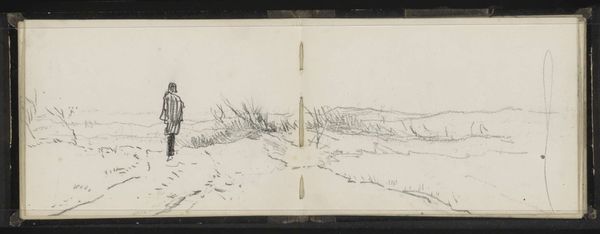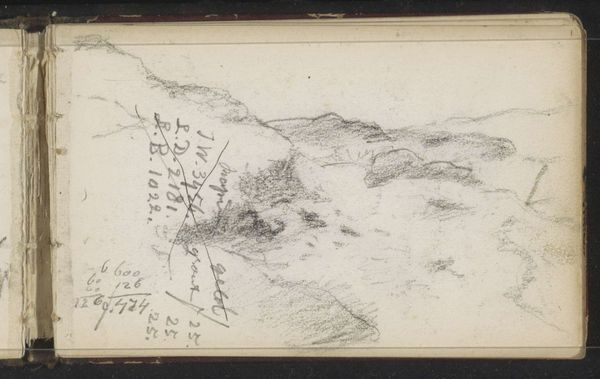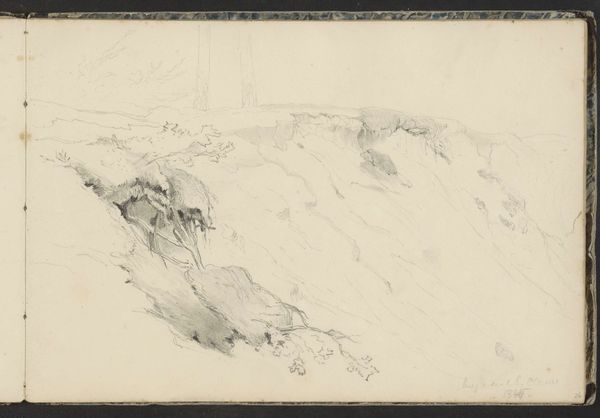
drawing, pencil
#
drawing
#
landscape
#
road
#
romanticism
#
pencil
#
genre-painting
Copyright: Rijks Museum: Open Domain
Johannes Tavenraat sketched this pencil drawing, "Zandweg op de heide van Nütterden," likely in the mid-19th century. It depicts a sandy path through the Nütterden heathland of the Netherlands. This work provides an intimate glimpse into the Dutch landscape and the artistic practices of the time. The sketch's loose, informal style suggests it was made on location, capturing a fleeting impression of the scene. Consider how the art academies of the Netherlands at this time, and throughout Europe, emphasized direct observation as the basis for landscape painting. This one departs from the conventions of a finished painting, where the landscape would be idealized. The quick notations and annotations in the margins give us insight into the artist's working process. Understanding this sketch requires exploring the history of landscape painting in the Netherlands, and the cultural value placed on the natural environment. Researching local histories and travel accounts would further illuminate the cultural significance of the heathland Tavenraat captured. This allows us to interpret art not just as aesthetic objects, but as documents of social and environmental history.
Comments
No comments
Be the first to comment and join the conversation on the ultimate creative platform.
